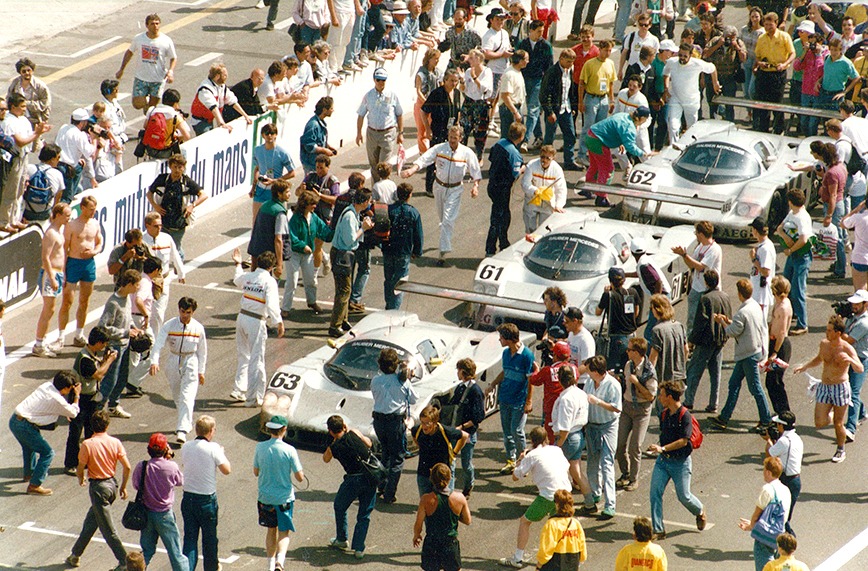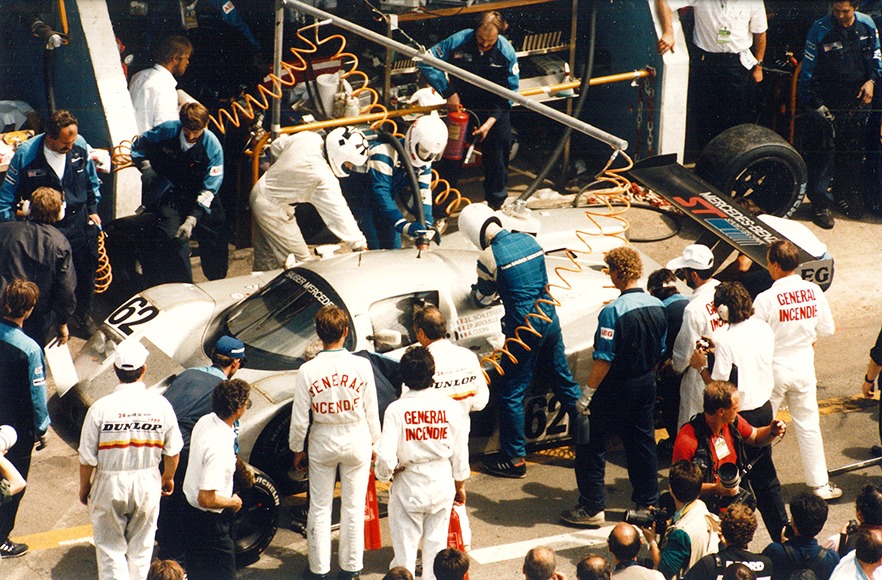
Jochen MASS
A German driver

A star is reborn
The only snag in a decade where German manufacturers, especially Porsche, have been head and shoulders above others was Jaguar's victory in front of fifty thousand ecstatic British fans in 1988. The Swiss-German team Sauber-Mercedes is the favourite to provide the feline with the answer in 1989.
Mercedes’s relationship with the Le Mans 24 Hours is tumultuous. It had participated before the war in the 1930 24 Hours race with national champion Rudolf Caracciola. It returned 22 years later and achieved a masterful double. Pierre Levegh's Mercedes was involved in the fatal accident of 1955, three years later. The manufacturer is retiring overnight and will no longer return to the 24 Hours race.
1989 was therefore the year of a real comeback. That year, Sauber-Mercedes formed part of the heritage of the "silver arrows" and achieved a new double with their beautiful metallic dress.

Jochen Mass: it's never too late

German driver Jochen Mass left F1 for endurance racing at the end of the 1982 season. This second career culminated with his recruitment by Sauber-Mercedes and his victory at the 1989 Le Mans 24 Hours when he took part for one of the last times at the age of 42.
He won a total of fifteen events in the discipline in spite of being a late starter. Mercedes also chose him to supervise the young drivers from its Junior team. Jochen Mass remains very close to the manufacturer today and regularly drives the firm's main cars in historic races.

Stanley Dickens, Jochen Mass and Manuel Reuter were among the only three-way winning crew for which each driver holds an individual plaque. You can explore these three plaques along Avenue Leclerc.